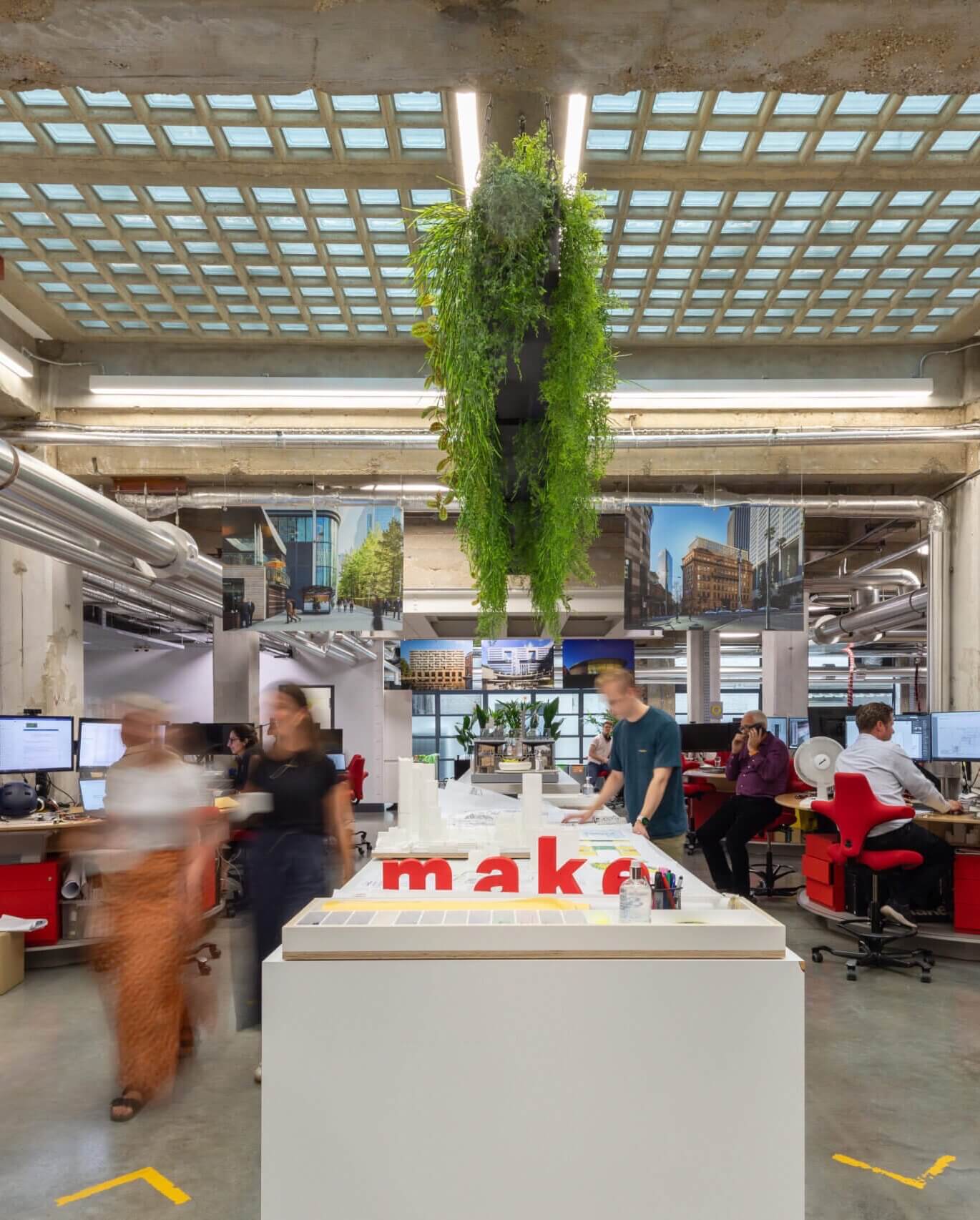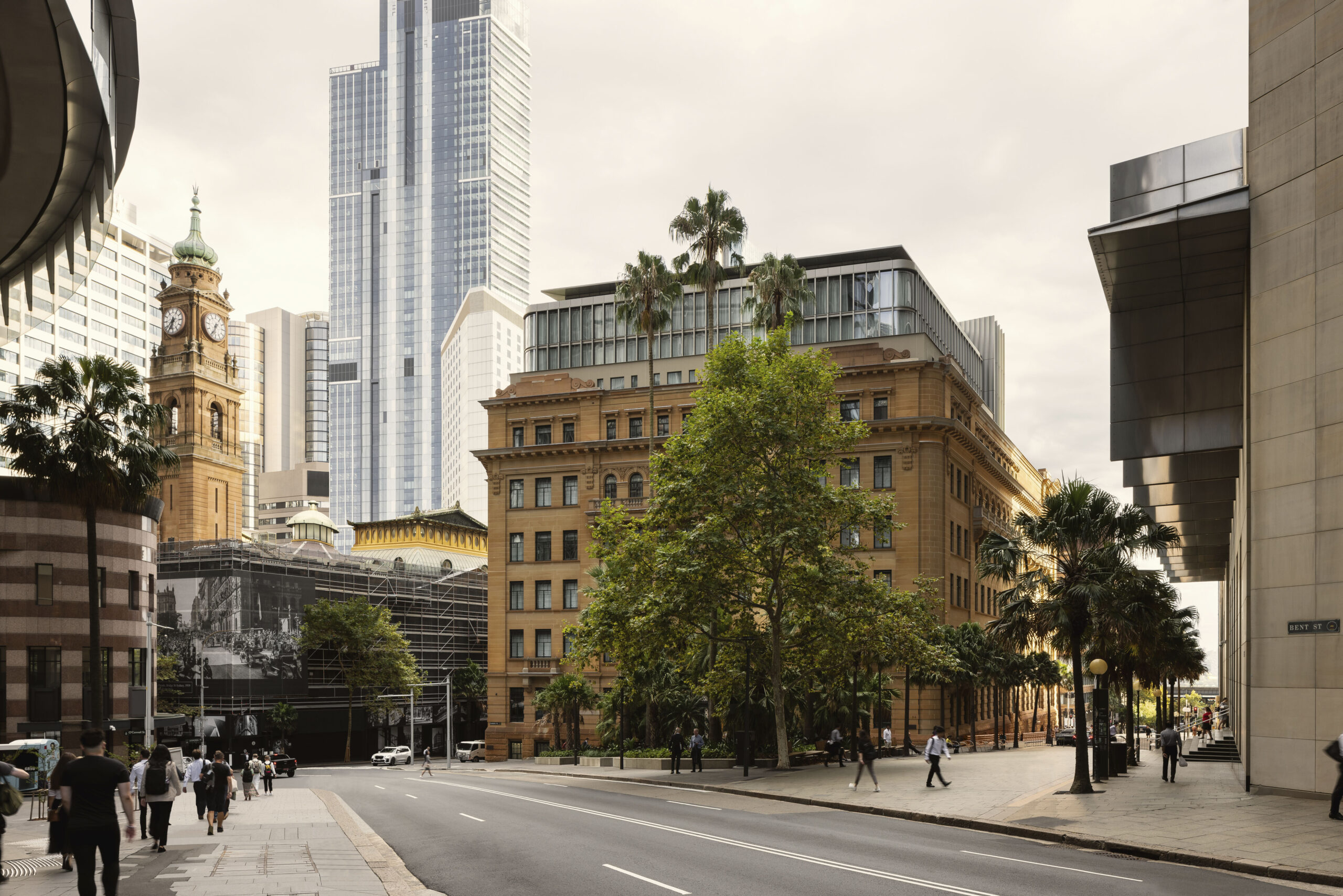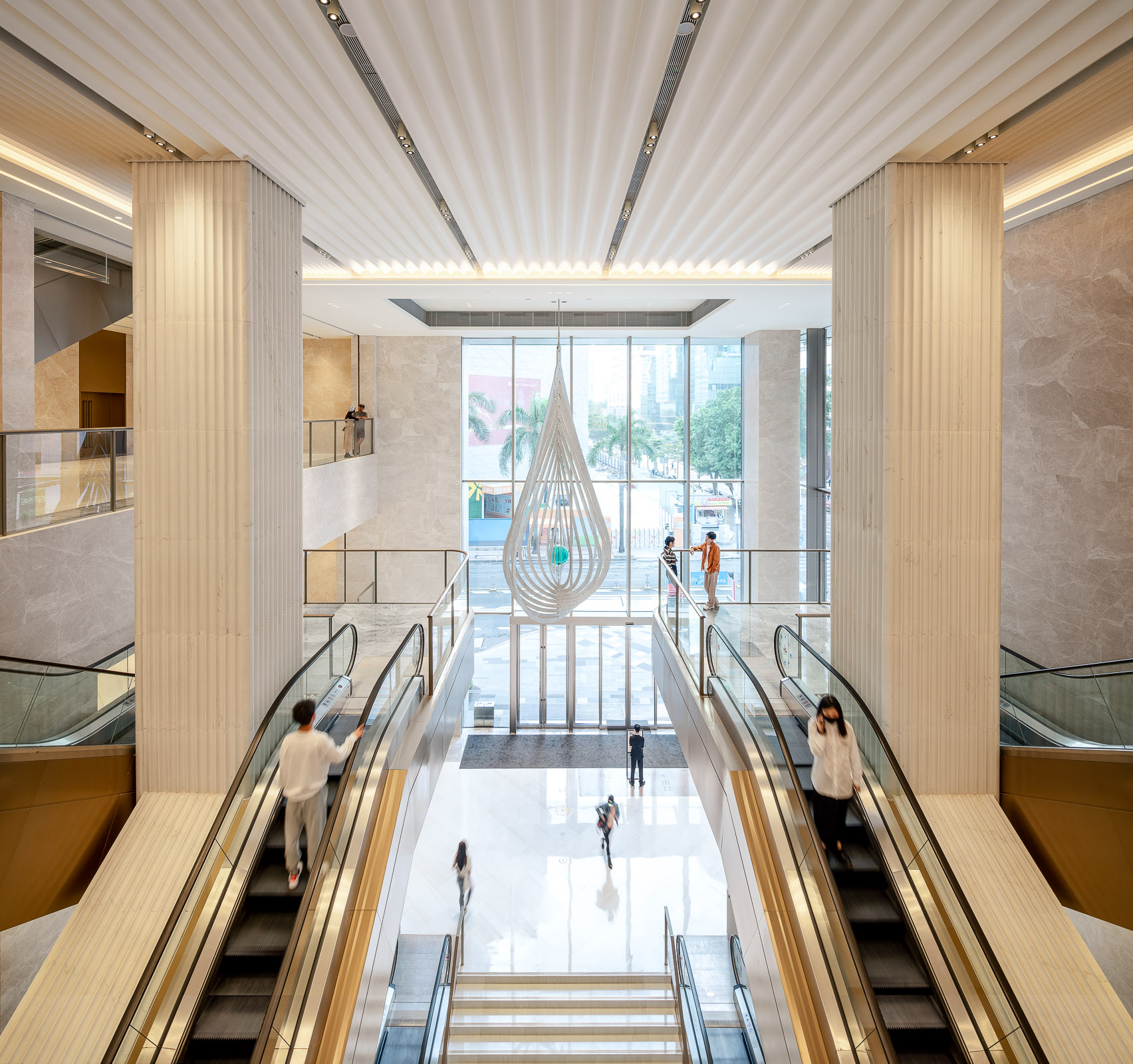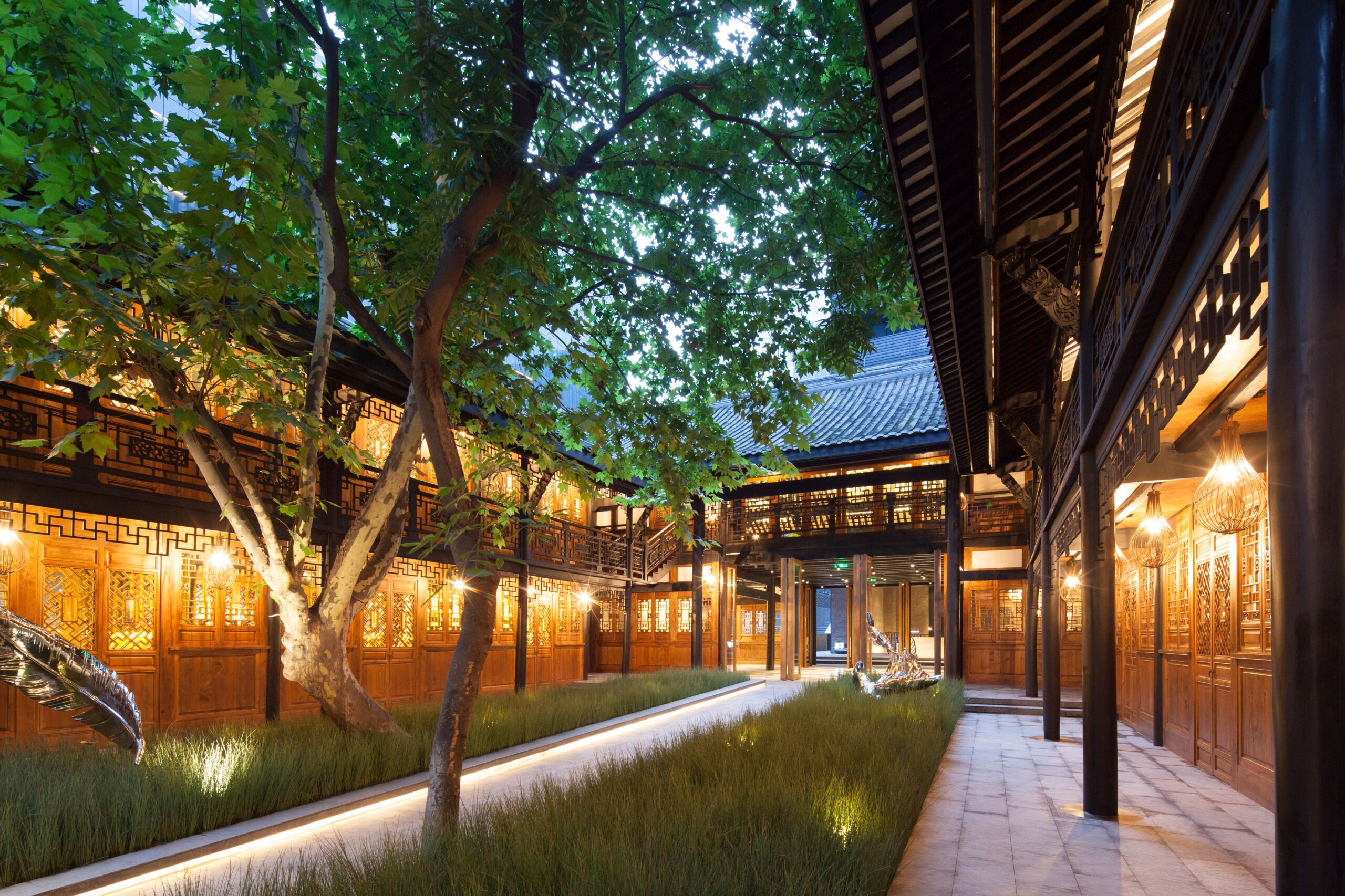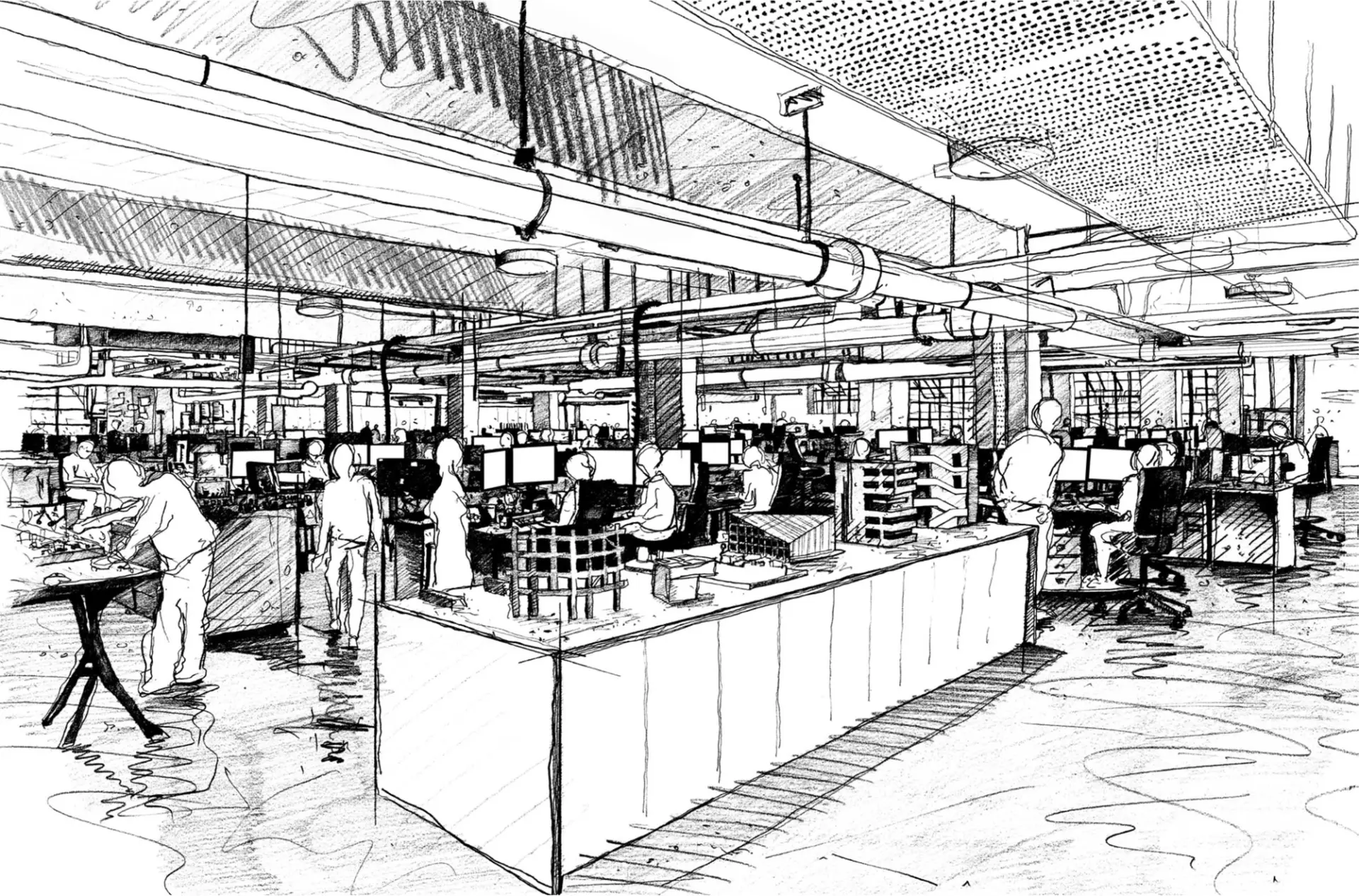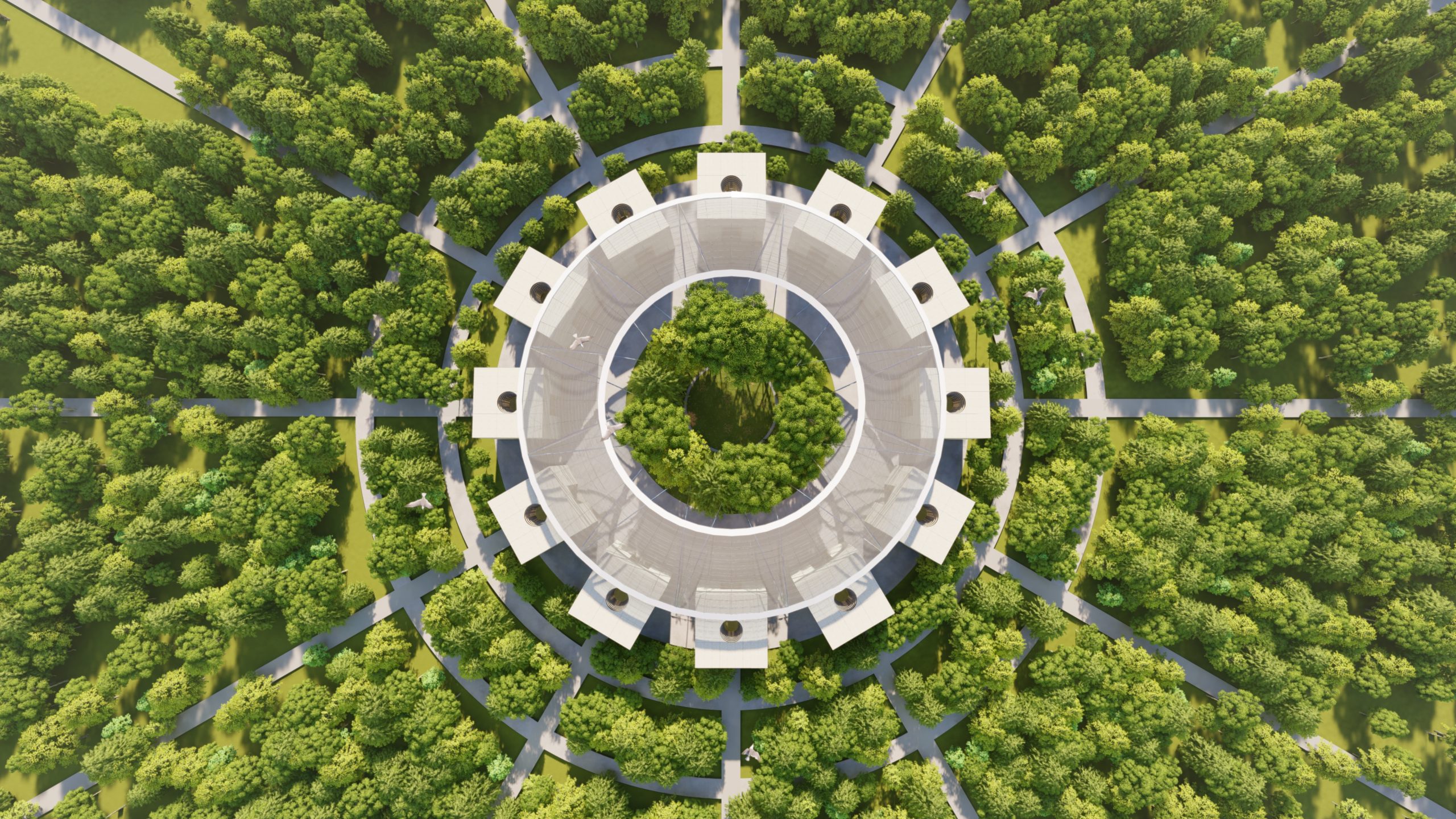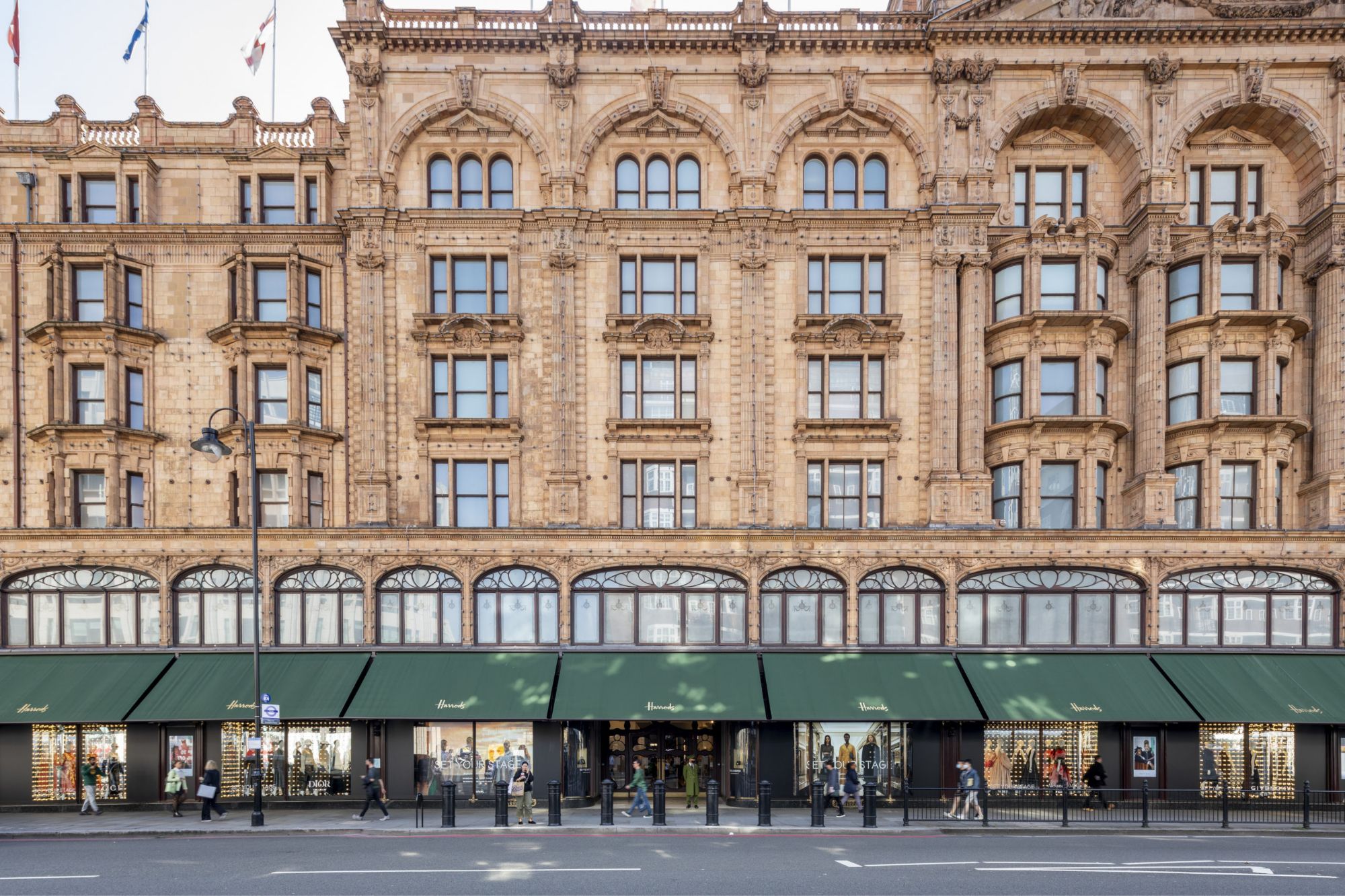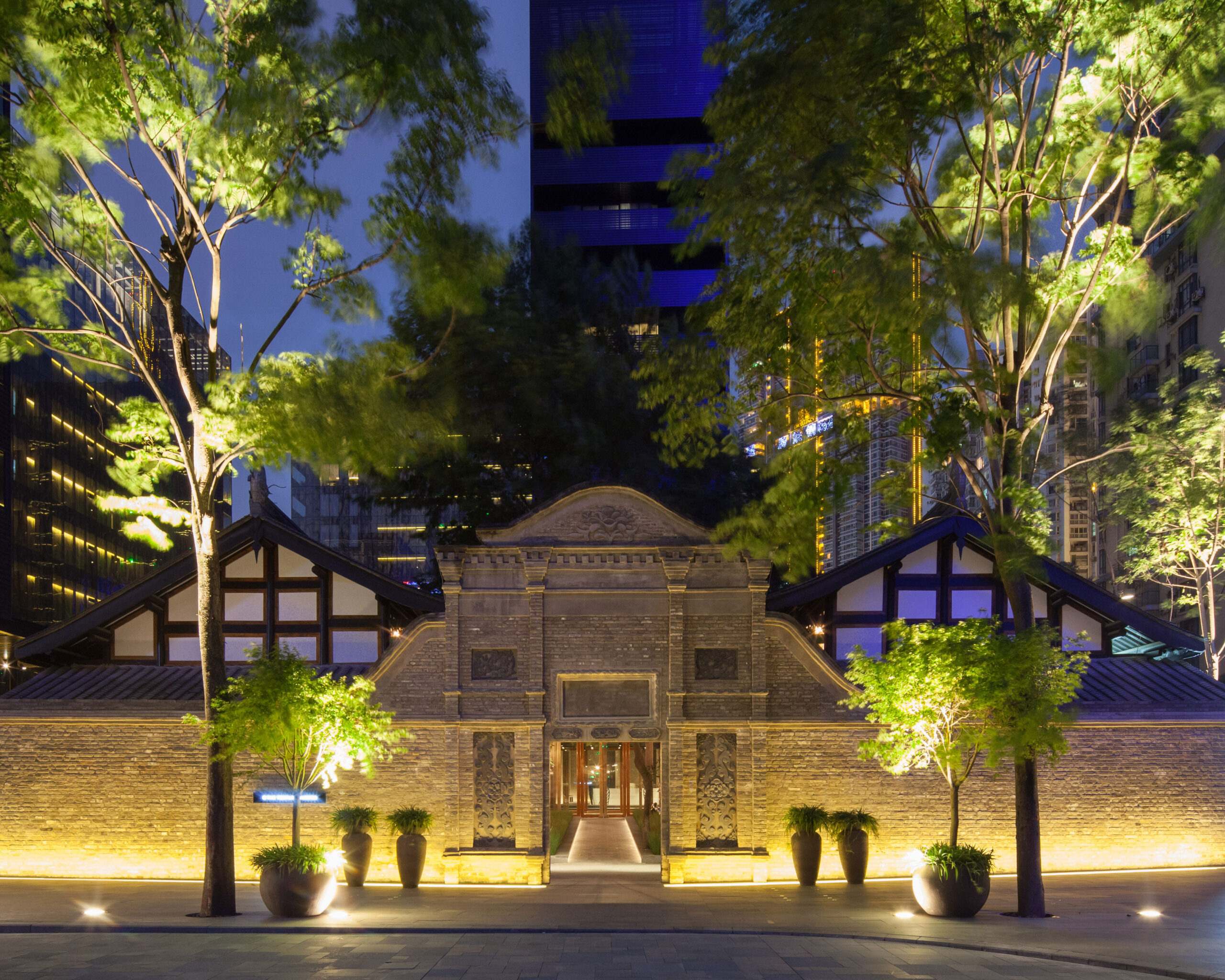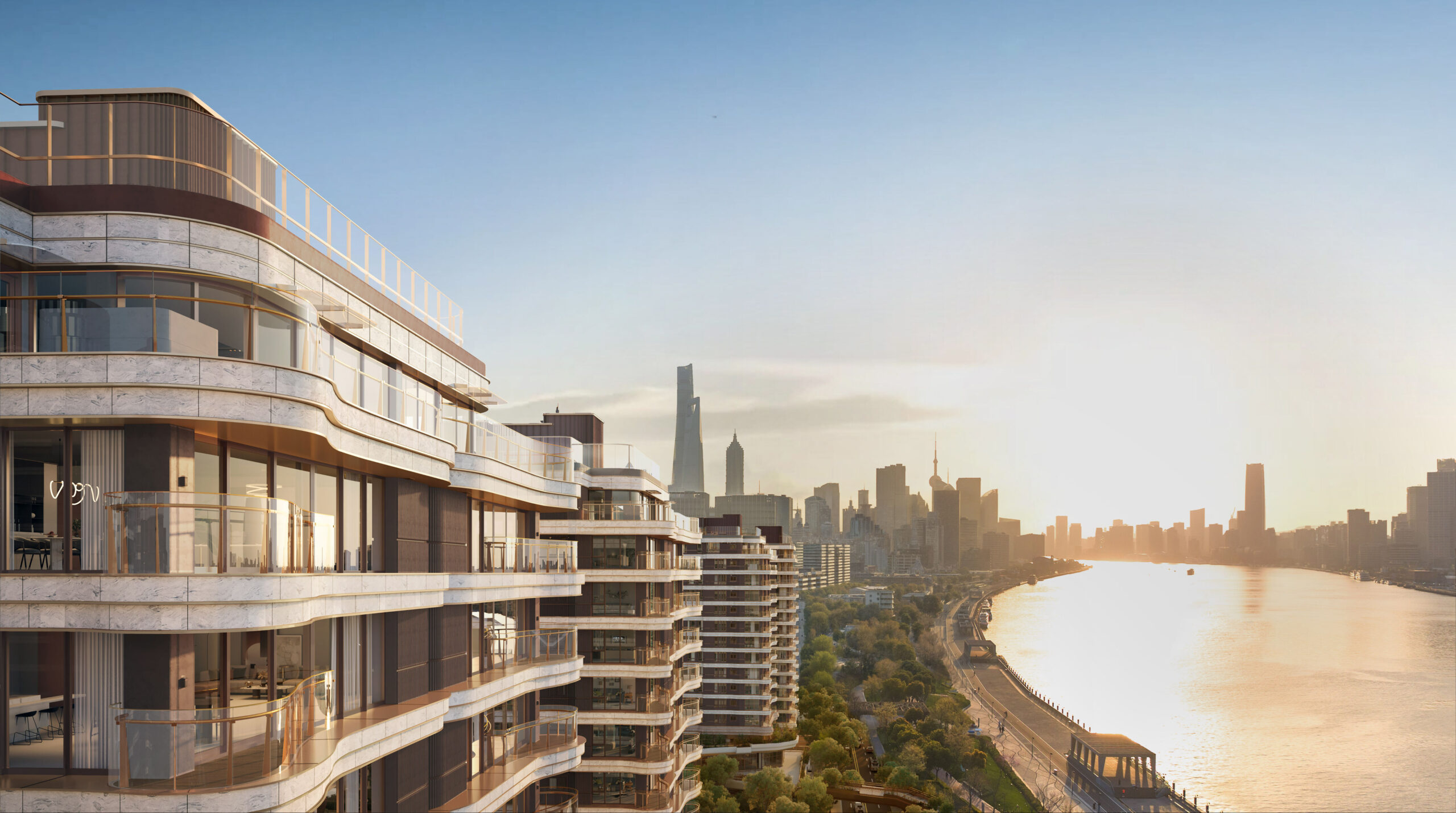
The project
We’re converting a former department store, above New Street Station, in Birmingham’s Grand Central into a future-focused workplace with sustainability and wellbeing at its heart. Our design retains the existing structure and innovatively opens up the atrium with a new glulam rooflight extension, creating a full-height, expansive 5-storey communal space in the centre of the building.
The atrium is key to the project and creates a sweeping, open space that widens as it rises through all four floors, providing visual connectivity between the levels and drawing the eye up to the glazed rooflight above, which will bring daylight down through the heart of the scheme.

Concept sketch of the Drum atrium by Ken Shuttleworth.

The model
To demonstrate our vision for the atrium, we constructed this conceptual, handmade wooden model to show the new glulam timber structure which will be inserted into the atrium space.
The vertical arches form the new roof, and we used the same arched shape in plan to create the floorplates with the curves forming the atrium’s edge.
To achieve the right look and create one continuous sculptural effect, our model version of the glulam timber structure showcases the continuous grain of the wood curving around the arches and floorplates.
First up, we built a steam box to soften the wood and make it flexible enough to bend into the sinuous shapes. Using a sheet of maple veneer, we cut a number of strips or leaves out of it. We then put all the leaves in the steamer and left them for 5–10 minutes to become pliable.
Once the leaves were out of the steamer, we brushed them with powdered resin glue and clamped the pieces in a specially constructed jig to shape the wood into the exact dimensions of the model. We left the pieces for 12–24 hours to allow the glue to dry and the wood to release excess moisture.



Our next step was to notch some of the floorplates and arches to ensure the pieces would fit together to create a solid structural model without any fixings.
Assembling the model was the trickiest step. With the vertical arches sitting both inside and outside the hoops, we had to do a lot of assembling, marking, dissembling, notching and reassembling again. This process was further challenged by the floorplates shrinking due to moisture loss while we worked.
Finally, the walnut base was cut to size by a timber merchant, and we then used a router to create a circular recess for the mirror, achieving a smooth transition between the walnut and glass surfaces. We laser cut a second ring on the other side of the base to insert a small circle of maple veneer to mark the base of the atrium. These circles, along with the circles on each floorplate, showcase the new design insertions.






